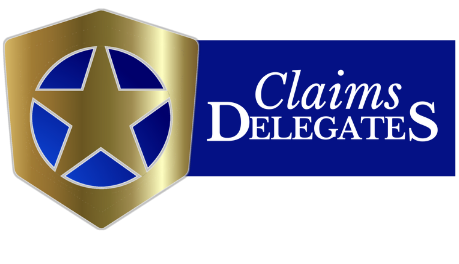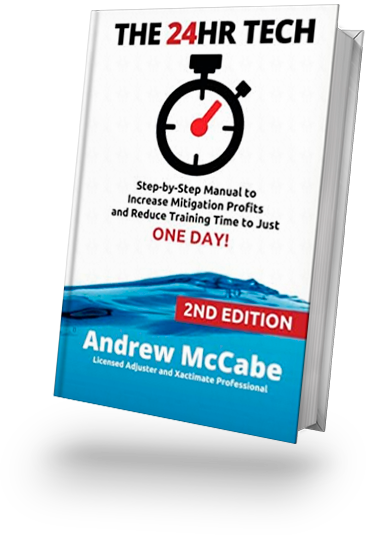Now let’s take a look at our own industry.
In what ways are we playing the same old game by the same old rules? When it comes to water damage mitigation, there are several opportunities that we can all start to take the “moneyball” approach to buying more runs, so we can get more wins.
As Billie discovered, in order to win more games, you have to score more points than your opponents. In order to score more points, you have to develop “a more perfect understanding” of where runs come from. Once your develop a more perfect understanding of where your “runs” come from, you’ll start to play the mitigation game in a completely different way.
“Your goal should NOT be to buy players. Your goal should be to buy wins. In order to buy wins, you need to buy runs.”
“Runs” Equal Revenue: When is revenue generated?
Revenue is income before expenses. Income is the net of what you bill and what you ultimately collect. How nice would it be if there were no difference between those two numbers? How do you determine what your bill is going to be?
In the insurance repair industry, the answer has a great deal to do with the software we use to generate the majority of our billings: Xactimate. Everything we do in restoration is filtered through Xactimate; from EMS bills to restoration estimates. It is the lens through which we view the world. It’s just he nature of our industry that we have to format things the way insurance carriers want it.
And if we ever hope to COLLECT it, we’d better BILL it using Xactimate. This means that ultimately there is a direct correlation between what we put into Xactimate and revenue.
Xactimate Equals Revenue
Any discussion about revenue needs to begin with where our Xactimate estimates come from.
On the surface, we tend to give all the credit to our estimators. You know, those keyboard wizards who sit down at their computers and conjure thousands of dollars of estimates and invoices every day. Are they ones responsible for the hundreds of thousands of dollars of revenue we need to keep our businesses running?
Writing in Xactimate is most definitely NOT a straightforward task. It takes years to become truly profficient at it. And even then, we’re all learning new things every day.
That is a big reason our estimators are among the highes paid people on our staffs. The estimates they write, and their ability to catch and document all the little details have a direct effect on revenue. How many people track the revenue at the point it is generated: in Xactimate?
If Xactimate estimates equal revenue, then the estimator who generates estimates at the highest volume also generates the most revenue. I call it Revenue Per Hour (RPH).
Do you know how much revenue your estimator is generating? We all have a fairly clear picture of revenues on an annual or even monthly basis, but what about hourly? Who tracks these things? I do.
I write Xactimate estimates for a living. Full time. As you can imagine, I’m not the most popular guy with the estimator/Project Manager crowd. The way I make a living is a very real threat to the way they make theirs.
In order to know their RPH you’d first have to find a way to track their time. No small task since their usually on salary, right? Then you’d have to separate the time they spend actually estimating from the time they spend on other activities like email, phone calls and driving. No easy task, I know. There are ways to track estimator’s time without acting like “Big Brother”.
Xactimate has several time-stamped functions that could be used to estimate the amount of time it takes to create an estimate. And for estimates started and finished in one sitting, it would be a fairly straightforward proposition to divide the total estimate by the time it took to generate and arrive at a rough RPH. I could go deeper into this analysis, but I won’t because this is MITIGATION Moneyball. So I’ll give you the short version.
As I mentioned, I write Xactimate estimates full-time for contractors across the country. Figuring my RPH was a simple proposition of dividing my time on a given project by it’s estimate total. Currently my Revenue Per Hour that I generate for my clients is $10,800. I’ve run this tally several times over the past couple years and it always comes out right about $10k.
The magical thing is that when I run my cost vs revenue analysis, it always ends up between 1.5-2%. Meaning Claims Delegates, or more accurately, the money my clients spend with Claims Delegates has an average ROI of over 7,300% (73X).
That means that as long as I maintain an RPH of at least $10k, I provide a 73 times return on my clients’ money. Compare that to a 10-11X return of an in-house estimator who at best can hope to achieve an RPH of $800. Why so low? Because they so often have to spend their time on non-revenue producing tasks. Having a generalist PM/Estimator on staff puts a real dent in your salary cap. The time has come to look for a new recruit.
Cost Per Run – What’s your salary cap?
RPH is an important statistic to know and track, but it’s only half the equation. The other half has to do with what it costs to generate revenues, i.e. salaries and overhead. It’s important to know your Cost Per Win or ROI.
The ’02 Athletics ended the season with an identical record to the New York Yankees. They won the same number of games. Can you guess the difference? Each one of the Yankee’s wins cost the ball club $1.4million. Billy’s A’s bought their wins at a much lower price: $225k. Through a more perfect understanding of where runs come from, the Athletics were able to produce wins and 1/6th the cost of the Yankees.
Let’s see if we can come to a “more perfect understanding” of the mitigation game. There are plenty of opportunities in our organizations to shave our salary caps.
If the goal of our game is more profit, that means that we either need to increase Revenue or cut Costs. Costs (expenses) are our Salary Cap. Our cap can only get so large before we start losing – money that is.
Most of our companies are centered around the project manager & estimator – who also is usually the same person. They are the quaterbacks of our teams. PMs call the plays and score the touchdowns.
Project managers are the face of our companies. They are the liaisons to adjusters and homeowners. Pm’s get to go to all the “marketing” events and golf tournaments. I was a PM. I got real comfortable as a PM and made a great living.
Project managers are also generally the highest paid people on the payroll, second only to owners. Along with a company car and phone, their compensation packages often include expense accounts and production bonuses or commissions. It is not uncommon to have a senior estimator who’s total compensation exceeds $100,000. I’ve worked with PM’s who took home over $200k.
We pay them high salaries and bonuses because our view is that they generate and control the majority of our revenues; but do they really? I believe that because we don’t yet have a “more perfect understanding” of where Revenue comes from, and where our salary caps are limited, we likely have more Johnny Damons on our staff that we’re comfortable admitting. All-Stars that don’t produce the kinds of ROI that they should.
We see their names on every contract and estimate. We talk to them about their monthly “sales” goals, and have grown to associate their success with the successes of our teams.
PMs versus Techs
If the PM is the QB, then the Water Tech is part of the offensive line. Without linesmen, the quarterback wouldn’t stand a chance. The offensive line is in constant battle, pushing forward. They protect the pocket. They block rushers. They create openings and influence direction for the star players to run and pass through.
As such, I believe that our offensive line, our water techs, are the most important part of the team. The unfortunate reality is that the only time we notice the line is when they mess something up. A missed tackle, or an off sides. Otherwise, they’re all but invisible.
Our current view of water techs also means that they are the lowest paid people on our staff. Overworked and underpaid is their reality. This also leads to the incredibly high turnover rate among techs in our industry. It’s amazing how many techs will jump ship for a dollar an hour.
If you want to play Mitigation Moneyball, and win, you’re going to have to reverse your current thinking. Our paradigm is due for a shift. As Kevin Dooley told me once,
“If the majority of your people are on the front line, you have to become a front-line minded company.”
Re-Frame ROI: Turn Costs into Revenue Streams
We can take a page out of the insurance carrier handbook on this one. What started happening in the mid-90’s in claims departments across the country? The paradigm shifted. Instead of seeing claims departments as cost centers, insurance companies started using the claims process to drive profits.
Instead of seeing techs as expenses to be cut and controlled, we should frame them as revenue generators in much the same way we view Xactimate estimators. Instead of “rewarding” PM’s for “sales”, we should properly incentive-ize our techs to generate more revenue.
(I’ll write faster if you send me a tweet! @TheClaimDoctor )



 The Royals just won the pennant for the first time in thirty years, right? Right now there’s a lot of sports writers telling us why this Royals team won and where the Mets went wrong. They’re talking about good calls and lucky plays, dominant players and voodoo magic. And yes, there are some things that happened during this series that can only be explained using supernatural forces – as there are every year at the end of October.
The Royals just won the pennant for the first time in thirty years, right? Right now there’s a lot of sports writers telling us why this Royals team won and where the Mets went wrong. They’re talking about good calls and lucky plays, dominant players and voodoo magic. And yes, there are some things that happened during this series that can only be explained using supernatural forces – as there are every year at the end of October.
 State Farm denied coverage
State Farm denied coverage ServiceMaster drops the ball
ServiceMaster drops the ball








